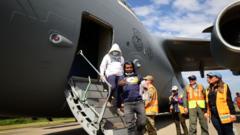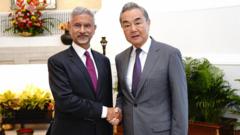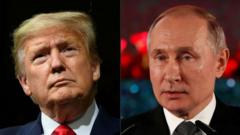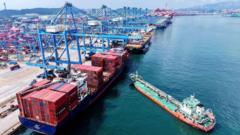Nike is set to increase prices on select trainers and clothing starting June 1, following similar indications from rival brand Adidas, due to uncertainty surrounding U.S. tariffs. While Nike did not specifically cite tariffs as the reason for the price adjustment, the majority of its products are manufactured in Asia, particularly in Vietnam, which could be significantly impacted by these levies.
Nike's Price Increase Amid Ongoing Tariff Concerns

Nike's Price Increase Amid Ongoing Tariff Concerns
Global sportswear brand Nike announces price hikes as it navigates uncertainty from U.S. tariffs affecting imported goods.
The planned price increases range from $2 to $10 for apparel and equipment, while most Nike shoes over $100 will see an uptick of up to $10. This pricing adjustment occurs against the backdrop of a 10% base tariff currently in effect on a broad spectrum of imported goods, although a temporary pause on additional tariffs is slated to expire in July. Notably, popular models like the Air Force 1 and items priced under $100 will remain unaffected by the hike. Tariffs typically impose additional costs on the importing company, often passed on to consumers as higher retail prices. Companies like JD Sports have voiced concerns that escalating prices could adversely impact demand in key markets.
Vietnam stands out as Nike's primary manufacturing hub, contributing significantly to its production volume. Recent developments indicate tariffs could be as steep as 54% for goods originating from several Asian countries. As these international negotiations continue and U.S. trade policies remain in flux, businesses like Nike are making strategic pricing adjustments to address potential cost increases. In a broader context, Nike's strategic shift to once again sell directly on Amazon signifies its adaptation to changing market conditions amidst an overall decline in its digital sales performance.
Vietnam stands out as Nike's primary manufacturing hub, contributing significantly to its production volume. Recent developments indicate tariffs could be as steep as 54% for goods originating from several Asian countries. As these international negotiations continue and U.S. trade policies remain in flux, businesses like Nike are making strategic pricing adjustments to address potential cost increases. In a broader context, Nike's strategic shift to once again sell directly on Amazon signifies its adaptation to changing market conditions amidst an overall decline in its digital sales performance.




















